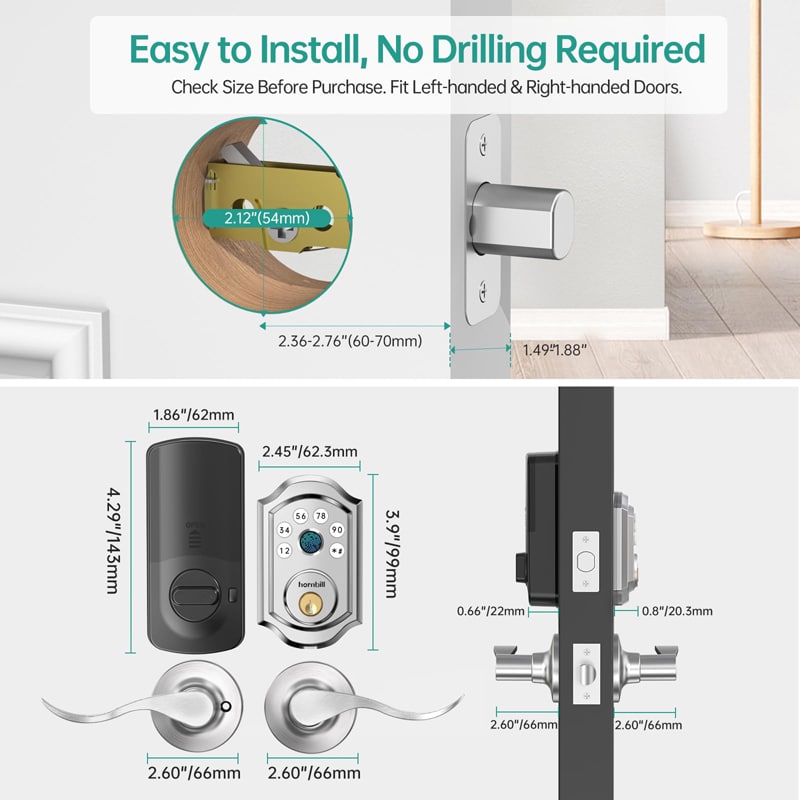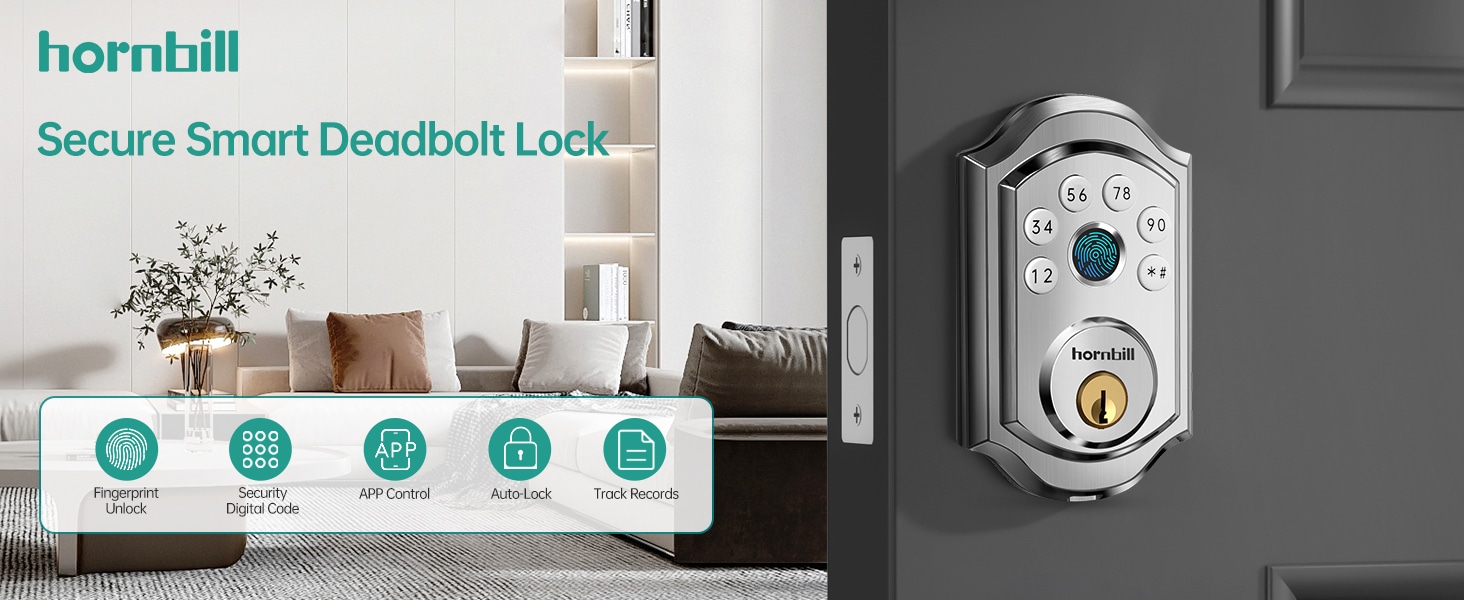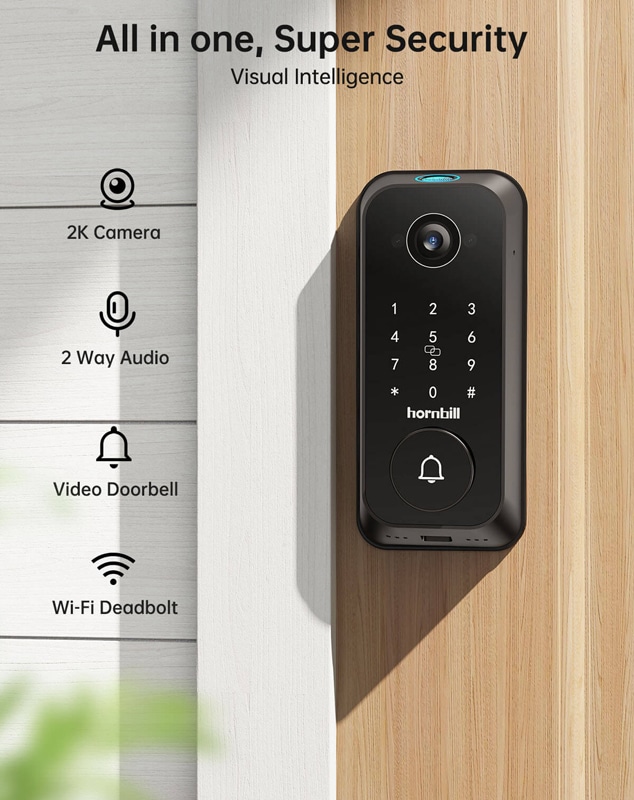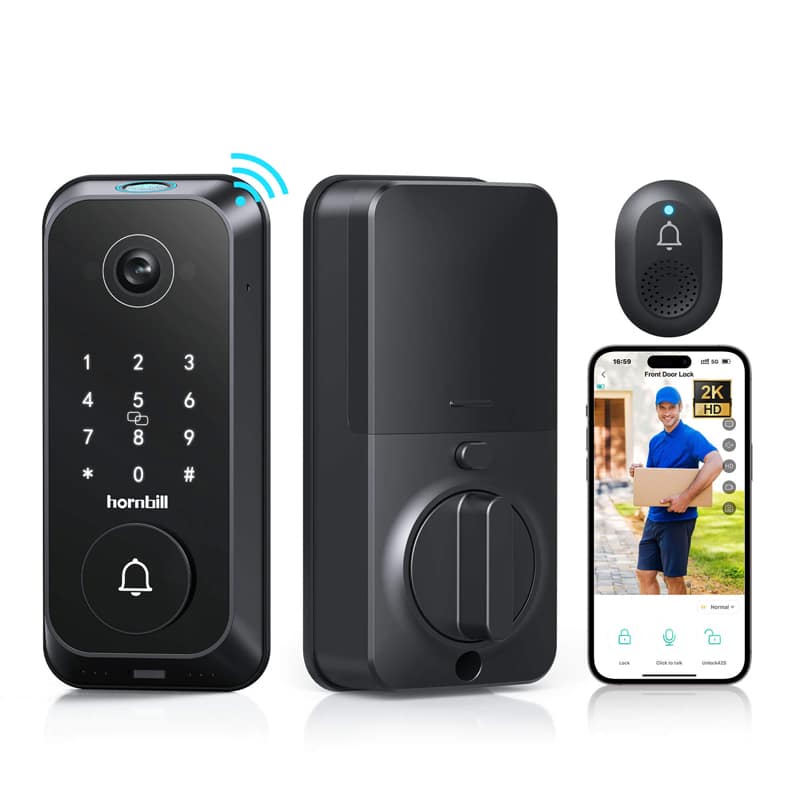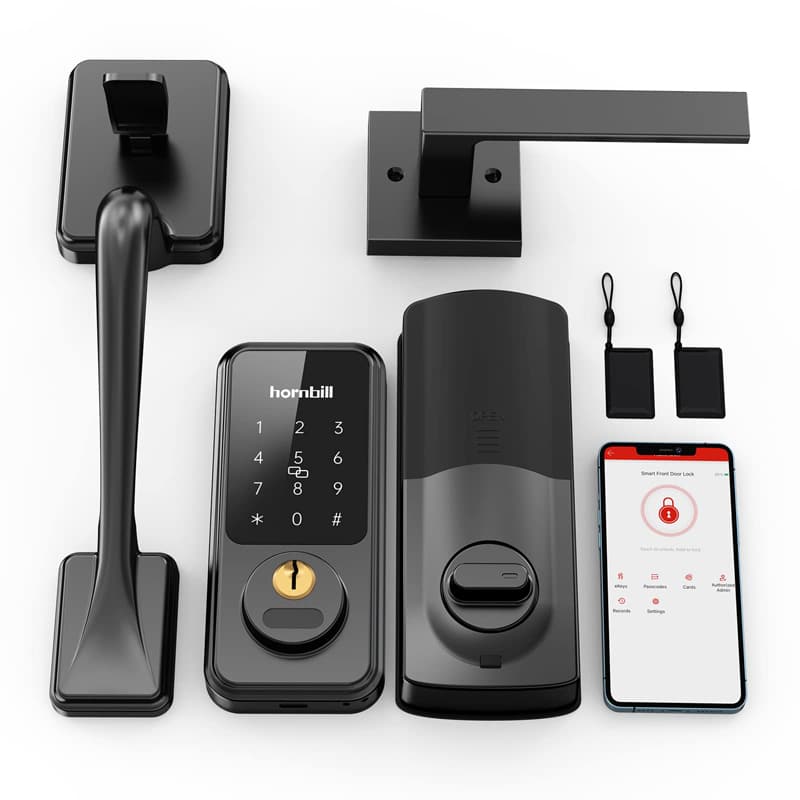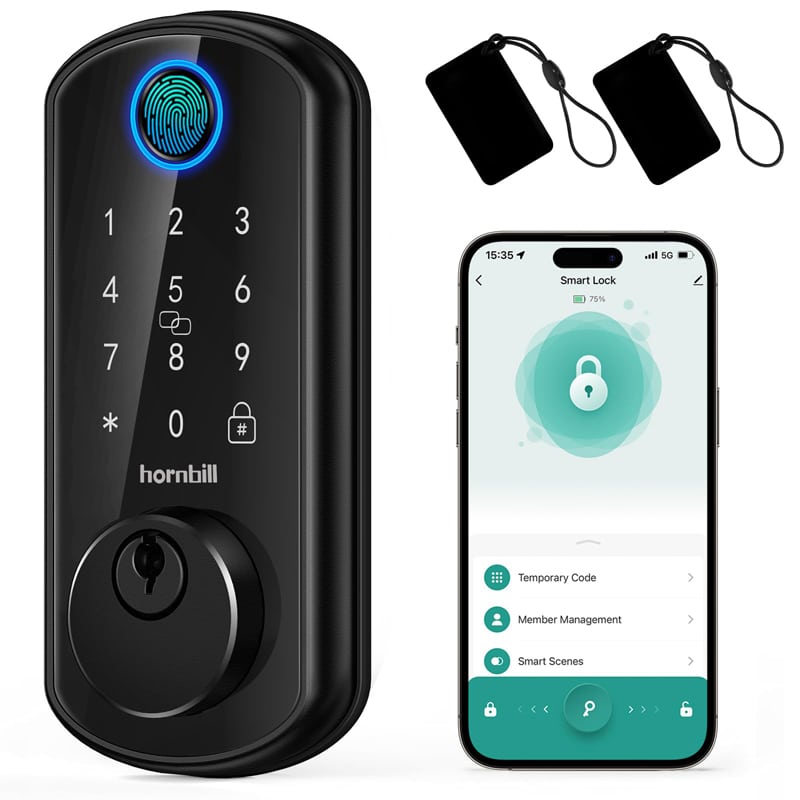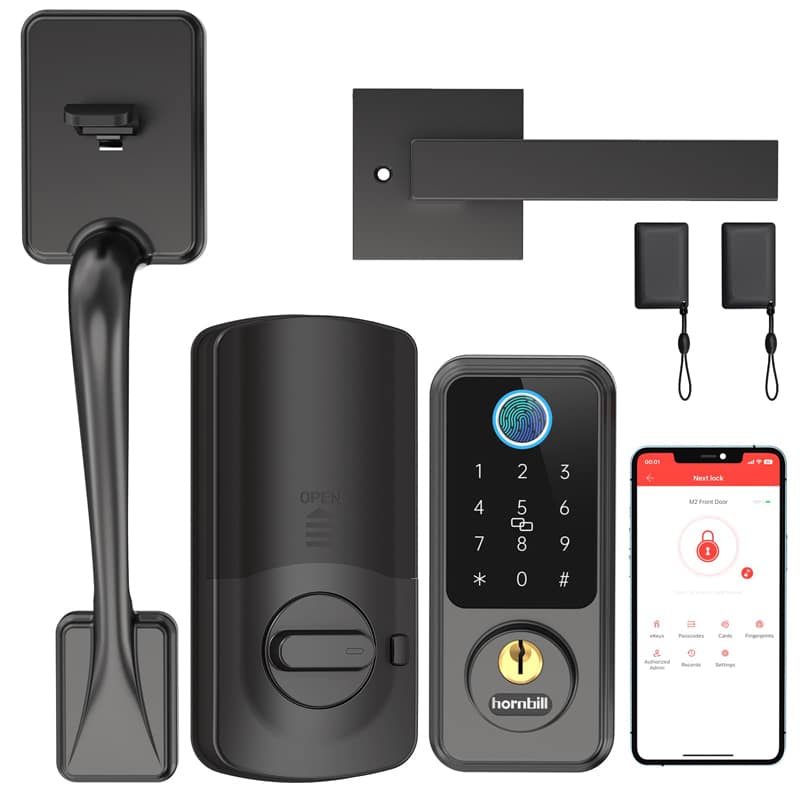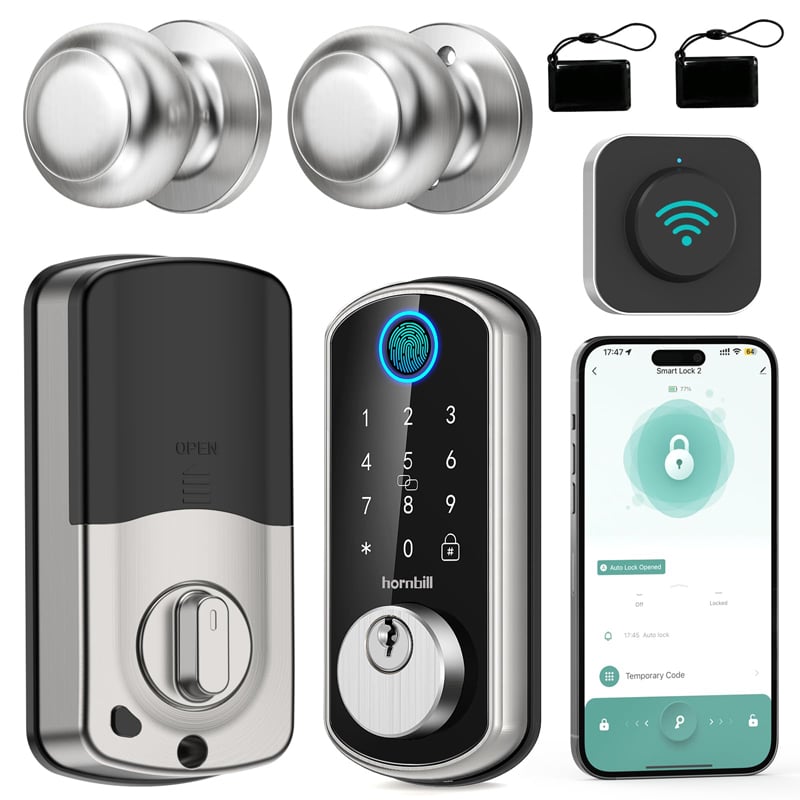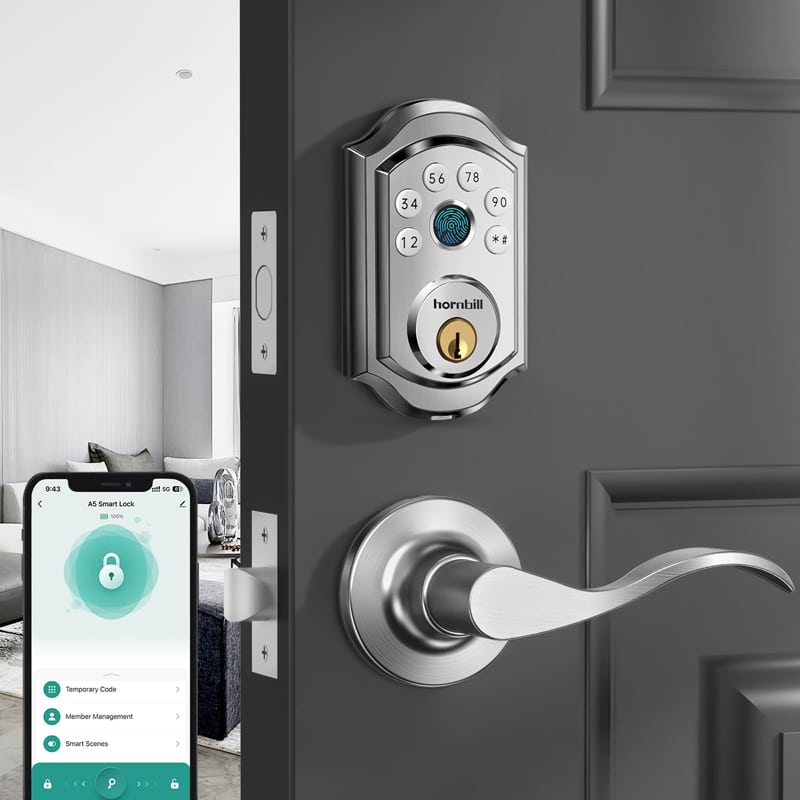Keypad lock are becoming increasingly popular among homeowners and businesses due to their convenience, security, and keyless entry features. But a common question arises: Can you install a keypad lock on any door?
The answer depends on several factors, including the door’s thickness, material, and existing lock setup. Let’s break it down to help you determine if a keypad door lock is right for your door.
Understanding Keypad Lock
A keypad door lock is an electronic locking system that requires a numeric code instead of a traditional key. Some advanced models integrate with smart home systems, offering features like remote access, fingerprint recognition, and voice commands.
Unlike conventional locks, keypad locks eliminate the risk of lost keys or unauthorized duplication, making them a secure and convenient choice for homes and businesses.
Is Your Door Compatible with a Keypad Lock?
Before installing a keypad lock, check these key factors to ensure compatibility:
1. Door Thickness
One of the first considerations is the thickness of your door. Most door lock with keypad are designed to fit standard door thicknesses, typically ranging from 1 3/8 inches to 2 inches. Before purchasing a door lock with keypad, measure your door to ensure compatibility.
2. Door Material
Front door keypad lock can be installed on various door materials, but some work better than others:
- Wooden Doors– Most compatible and easy to install.
- Metal Doors– Suitable for commercial buildings, but may require additional support.
- Composite Doors– Usually compatible if they meet the thickness requirements.
- Glass Doors– May not support traditional keypad locks unless designed specifically for them.
3. Existing Lock
Before you start installing a keypad lock, the first step is to remove any existing lock from your door. This process typically involves unscrewing the mounting screws on the interior side of the lock. Once the old lock is removed, carefully inspect the dimensions of the existing holes in your door. It’s crucial to measure these holes to determine if they align with the specifications required for the new keypad lock.
If the measurements do not match, you may need to drill new holes to ensure a proper fit for the keypad door lock. Before drilling, it’s advisable to mark the new hole locations accurately and double-check the alignment to avoid any mistakes. Additionally, make sure to use the appropriate tools and techniques for drilling to prevent damaging the door. Once the holes are ready, you can proceed with the installation of the keypad door lock according to the manufacturer’s instructions.
4. Door Edge and Frame
The condition of the door edge and frame is crucial for the installation of the latch and strike plate. Ensure that both are in good condition and can securely hold the new components.
How to Install a Keypad Lock (Step-by-Step)
If your door meets the compatibility requirements, follow these steps to install a keypad lock door:
1. Prepare the Door
- Remove the Old Lock: Unscrew and remove the existing lock.
- Check Alignment: Ensure the holes align with the new keypad door lock. If not, drill new holes as needed.
2. Install the Latch
- Position the Latch: Insert the latch into the hole on the edge of the door.
- Secure the Latch: Use the provided screws to secure the latch in place.
3. Install the Exterior Keypad
- Align the Keypad: Position the exterior keypad on the outside of the door, ensuring the tailpiece fits through the latch.
- Attach the Mounting Plate: From the interior side, attach the mounting plate and tighten the screws.
4. Install the Interior Assembly
- Connect Wires: If your keypad lock is electronic, connect the necessary wires from the exterior keypad to the interior assembly.
- Secure the Interior Assembly: Attach the interior assembly to the mounting plate using the provided screws.
5. Install the Strike Plate
- Position the Strike Plate: Align the strike plate with the latch on the door frame.
- Secure the Strike Plate: Use the screws provided to secure the strike plate.
6. Test the Keypad Door Lock
- Check Alignment: Close the door and ensure the latch and strike plate align properly.
- Test Functionality: Enter the default code or use the mechanical key to test the keypad door lock.
Additional Features & Operations
Many modern best keypad locks offer additional unlocking and locking methods, including:
Unlocking Options: Keypad code, fingerprint, IC card, backup key, voice commands, or mobile app.
Locking Options: Auto-lock, keypad, mechanical key, or app-controlled locking.
Reset Function: If needed, remove and reinsert the battery to reset the lock.
Final Thoughts: Can You Install a Keypad Lock on Any Door?
In most cases, yes—you can install a keypad lock on nearly any door, as long as it meets the necessary criteria regarding thickness, material, and condition.
By choosing the right lock and following the proper installation steps, you can enjoy the enhanced security and convenience of a door lock with keypad in your home or business.
Why Choose a Keypad Lock?
✔ No more lost keys
✔ Increased security
✔ Convenient keyless entry
✔ Multiple access methods
Would you like product recommendations for the best keypad lock based on your door type? Click for more door lock with keypad.

